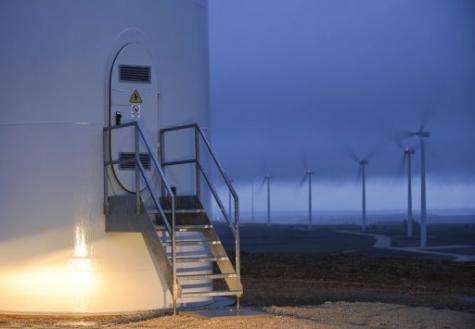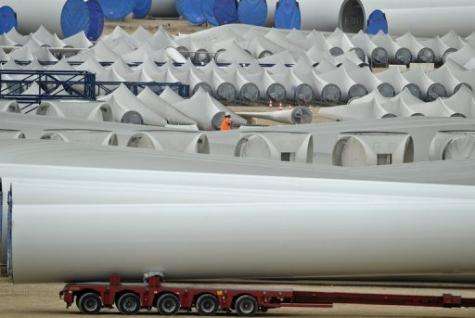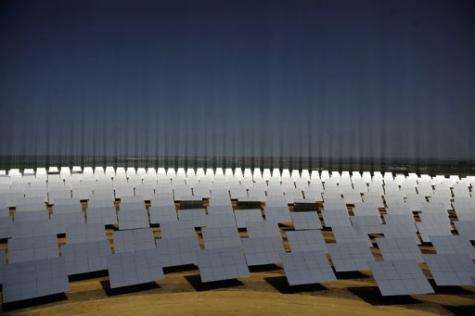In land of Don Quixote, wind turbines dot landscape

In the middle of the Spanish countryside 104 giant white windmills set against shrubs and haystacks sweep the sky day and night, providing electricity for 600,000 people.
A constant hum can be heard in the nearby town of Maranchon as the blades turn on the windmills, perched as high as a 23-storey tower block, casting shadows on the surrounding plain.
The windfarm located about 150 kilometres (90 miles) northeast of Madrid is the second largest in Spain, which has emerged as a world leader in renewable energy, especially wind power.
The country, whose best known novel "Don Quixote" tells the tale of a man who fights windmills he imagines to be giants, is now dotted with giant wind turbines as power firms -- encouraged by government subsidies -- take advantage of favourable weather conditions and an abundance of wide open areas.
Wind power has already overtaken nuclear energy. In March it became the country’s main source of electricity, accounting for 21 percent of demand and providing the equivalent of all Portugal's power needs.
Spanish power firm Iberdrola, the world's top wind energy company by installed capacity, opened the windfarm at Maranchon -- which made its fortune last century in the mule trade -- in 2006 after ruling that there would be no major risk for the environment.
"This park produces around 2,300 and 2,400 hours of electricity per year, which is a good average," said Fernando Marchan, a local official with the company renewable energy branch, Iberdrola Renovables.
Each windmill has the capacity to produce two megawatts of power. The energy they generate cuts CO2 emissions by more than 400,000 tonnes a year compared to other energy sources.
The first windfarms were set up in Spain in the 1990s. Twenty years later the country has surpassed former European leader Germany as the top wind power producer in the European Union.
At the world level it is the third largest wind power producer after the United States and China.

In just a few years renewable energy has grown dramatically in Spain, which produces virtually no fossil fuels.
Renewables provided 42.2 percent of electricity demand in March, mostly from wind and hydro power, according to power-generating authority REE.
While solar power accounted for only 2.6 percent of electrical demand that month, as with wind power, Spanish firms are amongst the world leaders in the sector.
At Sanlucar la Mayor in southeastern Spain, Spanish energy company Abengoa in 2007 built the first two solar power towers in the world to commercially generate electricity and deliver it to the power grid.
"They work by using many large mirrors to reflect the sun’s rays towards the top of a tower. The heat at the receiver warms liquid to a high temperature. With this heat we generate steam to power a turbine," said plant manager Valerio Fernandez.
Spain's southeastern region of Andalusia where the towers are located receive 200 days of sun a year making it one of the sunniest regions on the planet and an ideal spot for a thermo-solar energy field.

The towers and their 1,900 mirrors -- each as large as a three-bedroom apartment -- produce enough electricity to meet the demand of 15,000 homes.
In the wake of the nuclear disaster at Japan's Fukushima plant which has re-ignited the debate over the safety of nuclear energy, environmentalists dream of a country running 100 percent on renewable energy.
But the development of renewable power has slowed down.
The government has cut its subsidies for the sector as part of austerity measures aimed at reining in the public deficit and calming market fears that Spain will follow Greece, Ireland and Portugal in asking for an EU-IMF bailout.
For the wind power sector subsidies have been slashed by 35 percent until 2013.
At the same time the government has extended the operating licence of several of its ageing nuclear power plants.
In the meantime, Spanish technology exports are doing better than ever and solar parks and wind turbines made in Spain are sprouting up as far away as the United States, Brazil and China.
(c) 2011 AFP




















